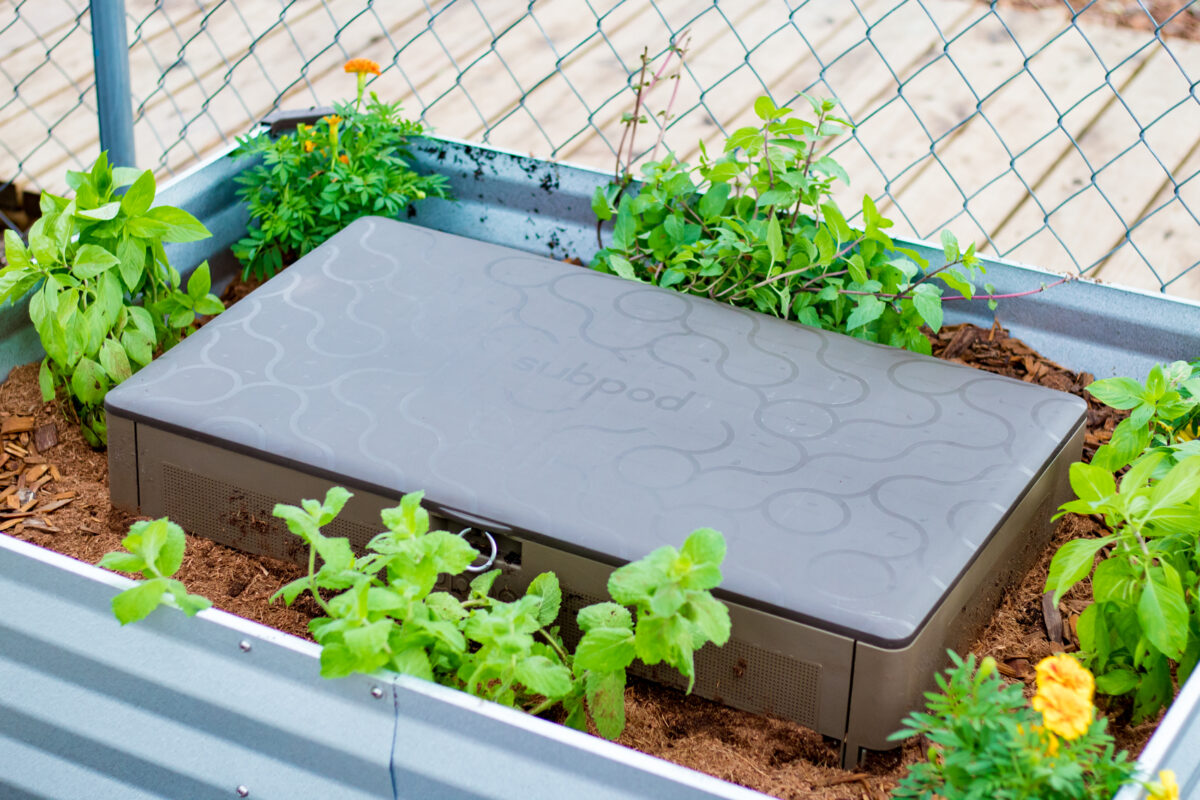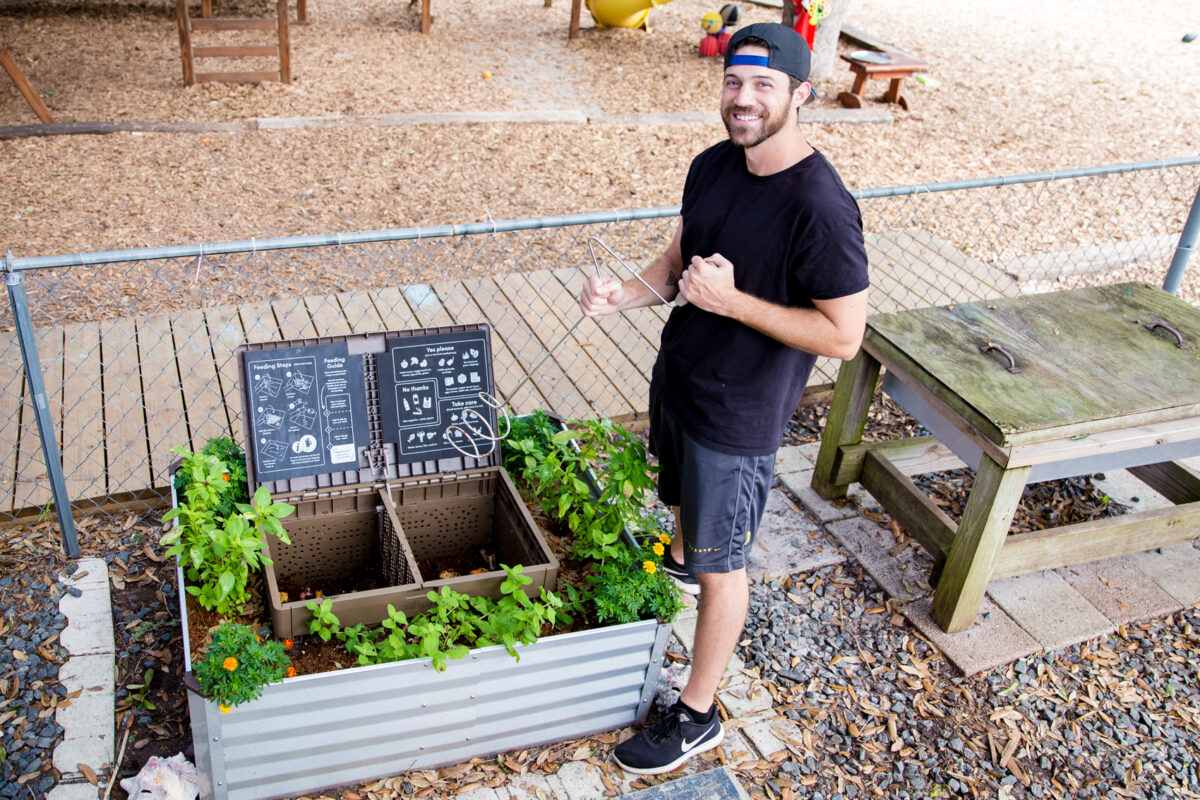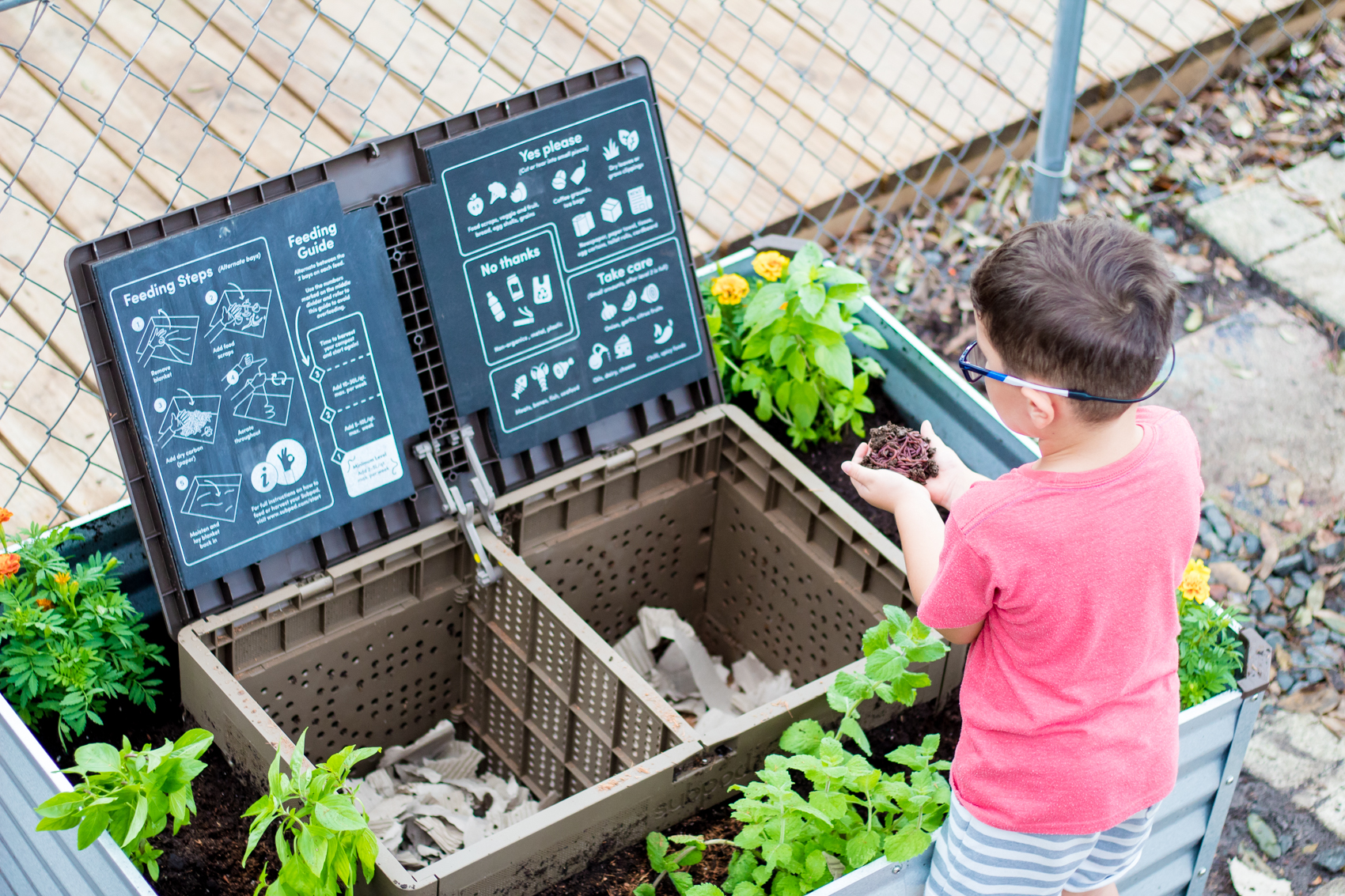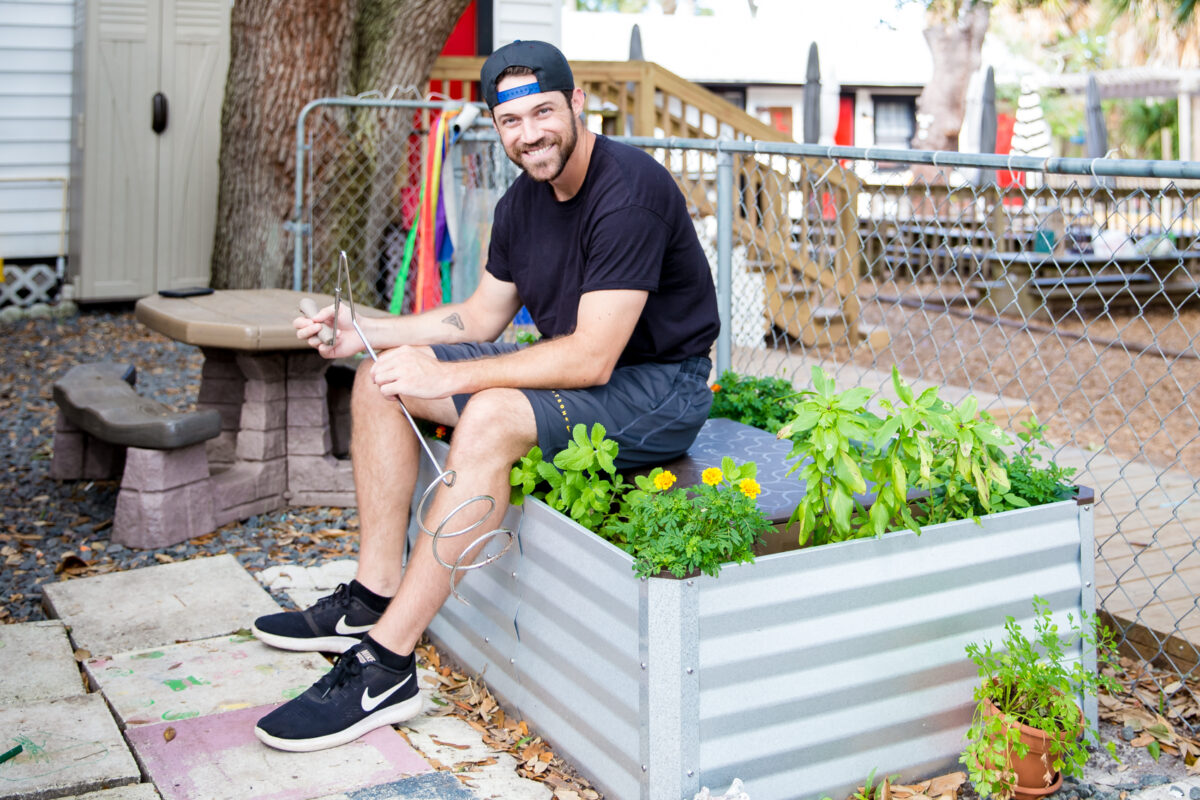Whether you are an avid gardener, looking for something new to implement in your yard while still social distancing, or simply wish to improve the state of our planet Earth, composting with worms in the all-new Subpod is the way to garden this season. No matter where you live getting outdoors and doing something beneficial for our planet, our homes, and our health is important to us all.
From families with kids who love to spend long afternoons outside to retired couples who enjoy the peaceful quiet time of gardening outdoors together, Subpod will take your garden, your soil, and your contribution to Mother Nature one step further. Starting with a few simple kitchen scraps and working toward reducing your environmental footprint, Subpod will make composting with worms a fun, educational, and engaging experience for everyone involved. Here is all you need to know about Subpod and composting with worms at home.
What is a Subpod

A Subpod is a below ground (i.e. buried) worm garden that allows compost worms to rapidly turn organic waste (food remnants, cardboard, eggshells, leaf, and grass clippings) into worm castings creating a healthy and rich, natural, and organic food for your soil and your plants. Simple to set up, easy to maintain, aesthetically pleasing, and even fun, families everywhere will love gardening and composting with worms with Subpod now and for many years in the future.
Read More: A Beginner’s Guide to Homesteading
Crafted of BPA free polypropylene, the Subpod is made of a safe, high-quality, extremely durable plastic allowing it to be buried or installed in virtually any type of yard or garden. The Subpod is able to withstand high temperatures and is designed for durability and longevity with a minimum lifespan of 10-15 years in the soil without any leaching or degradation. The Subpod is strong enough to support up to 440 pounds with the lid acting as a bench for those wishing to add it to their garden plot or planter. Finally, the polypropylene crafting allows the Sudpod to be recycled at the end of its use, as Subpod says “completing its life cycle.”
How does the Subpod Work
The Subpod works by composting with worms as in nature. This easy to use worm farm requires little maintenance and simply needs to be fed. Once the initial setup is complete your worms will feast off of your organic waste remnants placing less in our planet’s oceans and landfills while simultaneously creating rich, glorious, nutrient-dense soil for your surrounding plants, herbs, fruits, and vegetables. The Subpod is available as either the worm garden alone, or as a kit with a raised garden bed option included.

Read More: Reducing Waste: Simple Practices to Teach Kids Today
As you begin composting with worms, you will start slowly and feed your worms sparingly. It takes approximately 12 weeks for composting worms to adapt to their new environment and you don’t want them to die off. After that, the Subpod is designed to process up to 30 liters of kitchen scraps/organic waste materials a week. On average this is the household output of approximately 4 people.
Read More: How To Build A Raised Garden Bed
The Subpod works by allowing you to place food scraps such as fruits and veggies, eggshells, bread and grains within, along with coffee grounds, tea bags, yard clippings, grass, and paper and cardboard pieces which the composting worms will slowly and steadily eat their way through within the week. The more worms you have the quicker the process, but composting worms are hungry little creatures, and while small can process plenty of waste.
Read More: Eco-Friendly and Unique Ways to Garden
When you feed your worms, you will also aerate the Subpod with an aerator preferably, or a shovel or pitchfork, along with adding a bit of moisture to your worms by watering the included worm blanket in order to optimize the humidity and composting conditions within your Subpod. Your Subpod will not only feed the garden surrounding it but will also create nutrient-rich material that can be harvested and used throughout your land and garden.
How to Assemble Your Subpod
- Unpack and unfold your Subpod worm garden.
- Attach the lid and included divider following the simple tool-free instructions.
- If burying in an existing garden plot or planter, simply dig a hole deep enough to place the Subpod within, leaving the ventilation holes about the soil line to maintain a clean, odor-free, aerobic composting system.
- If planting the Subpod within the Raised Garden Bed Kit, assemble your raised bed easily with the included tools, insert your Subpod either in the center or closer to a side, depending on whether you plan to use the lid as a bench, and fill the surrounding garden bed with fresh soil and herbs or plants of your choosing.
- Fill your Subpod with composting worms and cover them with the moistened worm blanket.
- Begin collecting your kitchen scraps and feed your worms regularly, making sure to include both food scraps and paper or uncoated cardboard products.
Why Composting With Worms Works
Composting with worms works because compost worms can eat roughly half of their weight every day. While this may not seem like much, most worm composters, such as the Subpod, hold anywhere from 1000 to 2000 worms at a time significantly reducing the amount of kitchen and yard trash heading to the dump. Additionally, these worms are eating nutrient-rich food skins, eggshells, and the like, processing it through and in turn creating worm castings which are chock-full of these nutrients themselves.
Read More: Why We Need Bugs, Bees, and Other Creepy Crawly Critters
Composting with worms is a simple and earth-friendly solution to taking care of much of our trash output. Worms have been hard at work breaking down organic materials and returning nutrients to the soil for millions of years, giving us the ability to both reduce the amount of trash sent to the landfill and better feed our other plants and garden plots and even allowing us to grow our own food naturally.
Composting With Worms Tip: Cutting up your scraps or simply feeding your worms smaller pieces of food allows them to better process your kitchen waste as they do not actually have teeth and it makes it easier for them to delve into and break the food down faster.

When composting with worms do not overfeed your worms. Worms will likely need to be fed 2-3 times a week depending on how much scrap food you are providing at each feeding. Be careful not to overfeed, or to make sure the last meal has been eaten before adding more because otherwise the food will rot, attracting fruit flies and other unwanted pests and/or odors. Further, do not feed your Subpod during the winter if you live in an area where the ground freezes unless you create a frame to keep in the heat. Your worms will not be working your composting system once the temperature drops below 60° degrees Fahrenheit.
Ideas for Gardening With Subpod

- Plant your Subpod in an existing garden bed or garden plot where the composting worms will freely come and go, fertilizing the entire area while also feeding your plants or fruits and vegetables.
- Using the raised garden bed, install the Subpod outside your kitchen in a spot where you can easily grow herbs for your household and culinary needs while also having easy access to dump your scraps and feed your worms.
- Perfect for schools and businesses, install a Subpod near the lunch or picnic area where you can create a pleasant look with Subpod raised garden bed and feed the worms regularly creating fabulous, nutrient-rich compost.
- Add the Subpod to your small family farm for growing your own food year-round; utilize more than one Subpod depending on how much you grow.
- Subpods are ideal for community gardens or co-ops that grow fruits and vegetables.
- Install a Subpod for Earth Day and give back to the Earth with this eco-friendly way to decompose waste.
- Ideal for schools (or homeschoolers), the Subpod and accompanying raised garden beds can be used to teach children both science and practical life skills, including biology, agriculture, and sustainable farming practices.
Daily Mom Readers can get 10% off of their Subpod just in time for fall gardening and holiday gifts now using the code: Dailymom10
SHOP:
Subpod Grow Bundle
EXPLORE AND CONNECT:
Subpod | Facebook | Instagram | Youtube

Gardening can be fun for people of all ages, big or small, families, couples, and individuals alike. Imagine the difference it would make to our planet if everyone took a simple step in the right direction and began composting their kitchen and yard scraps with a Subpod. Whether you are planning your spring or fall garden, designing a sustainable space at your home or business, or simply looking for a long-lasting, fun, hands-on STEM and science activity for your homeschool lessons, a Subpod is an interactive way to learn and experience composting with worms on a daily basis. No matter how much space you have available, from a tiny rooftop garden to acres of land at your disposal, a Subpod is simply the best and easiest option for learning to compost and doing your part to preserve our planet Earth.
WANT TO READ MORE?
Check out this article on the Do’s and Don’ts of Composting.




































































